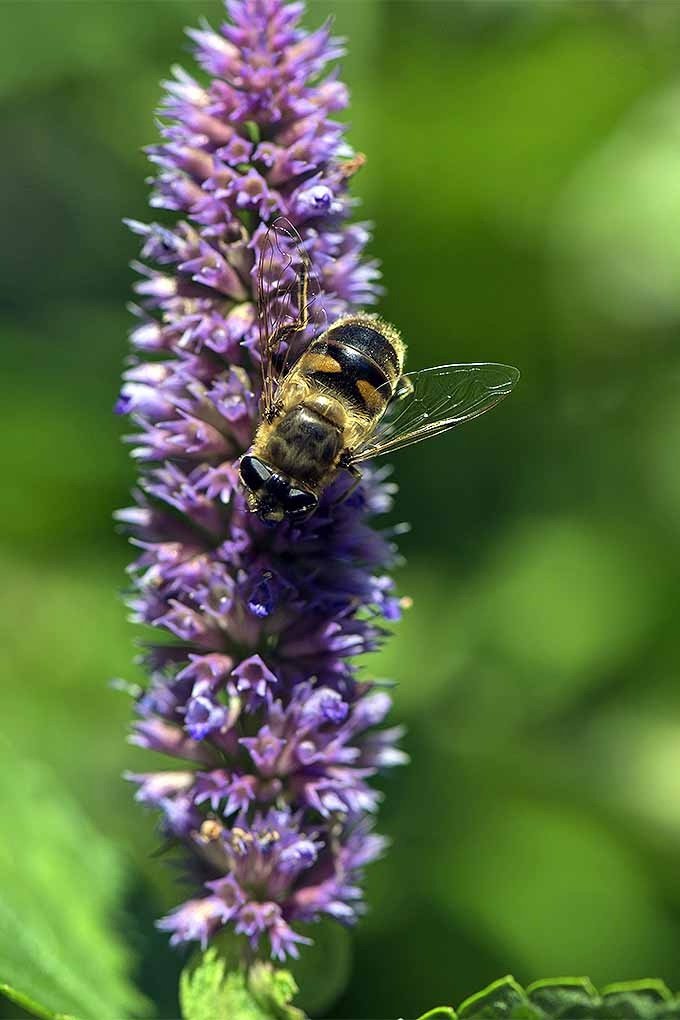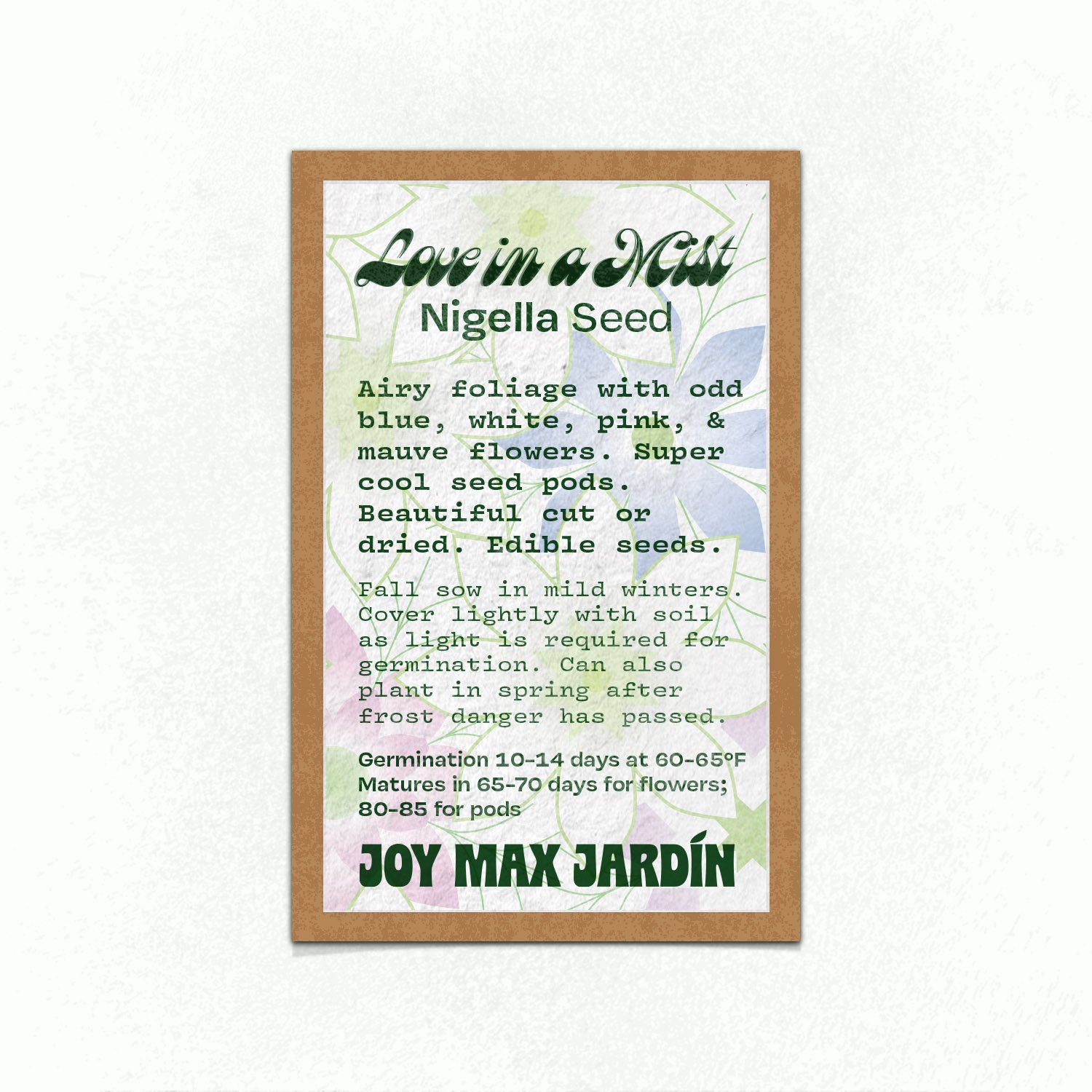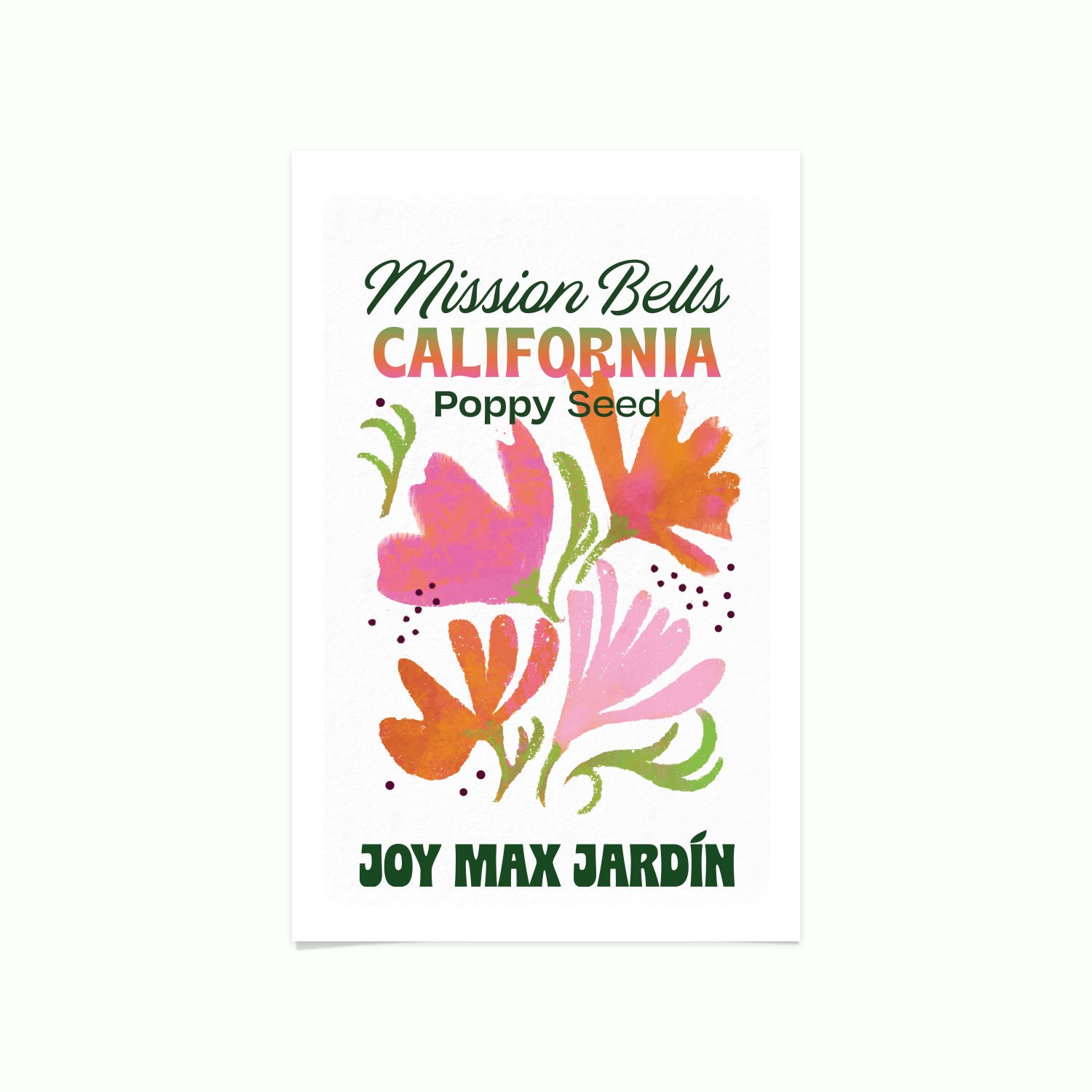How to Grow Anise Hyssop
Agastache foeniculum
Anise hyssop has been grown for centuries for its medicinal qualities but it also attracts pollinators and repels deer. Perennial in USDA zones 4–8.
Anise hyssop is a tender perennial herb that can be used to great effect in the landscape and harvested for medicinal uses. It is a pollinator magnet. It reseeds easily so will naturalize if you let it. Choose a location in your border to let it flourish and discourage deer and rabbits.
JOY MAX SCALE ✦✦✦✦✦
✦ It grows wild in northern regions of North America, sprawling across open prairie land and creating vast stretches of lavender blossoms from June to September.
✦ Mature heights are between 2-4 feet with a spread of 1.5-3 feet. True statement plants with a bushy growth habit and towering purple spires of flowers that will usually be covered in bees.
✦ Also called fragrant, lavender, or blue giant hyssop, this is an aromatic herb. The leaves have a refreshingly sweet smell and taste, like a combination of anise, licorice, and mint. The flowers themselves have no aroma. The leaves and flowers make a refreshing, fruity tea, and can be added to salads.
✦ Sometimes called hummingbird mint as it appeals to hummingbirds and other pollinators with a long proboscis that are drawn to the nectar-filled towers.
✦ If you want a lot of this eye-catching herb, it’s easy to propagate, divide, and it also reseeds easily.
✦ Once established, you barely have to worry about it. It is part of a water-wise landscape.
Store your seeds in the refrigerator when you get them to help with cold stratification.
Basic Growing Information
GROW ZONES: 4-9
PLANT HEIGHT: 24-36”
PLANT WIDTH: 24”
SEED SPACING: 3”
SEED DEPTH: Surface sow
IDEAL TEMP: 60-70º
Germination: Will sprout in spring after fall sowing
DAYS TO MATURITY: 57
SOIL: Can tolerate poor soil but must have good drainage
LIGHT: Full Sun to part shade (less blooms)
A. foeniculum seeds germinate well after exposure to cold and moist conditions. This process is called cold stratification.
The best way to start seeds is to sow them directly into the garden in early fall, so they can experience natural cold stratification during the winter months. In Austin, we do this in October.
Unlike many seeds, those of A. foeniculum need light to germinate. Moisten the soil and sprinkle them on top about three inches apart, then gently press them down.
Keep the soil moist over the winter months, watering just before it completely dries out.
In the spring, the seeds will sprout.
When the seedlings have at least two sets of true leaves and are fairly sturdy, thin them to a distance of 1.5-2’ apart to give them lots of space to reach their full size.
Tips for Growing Anise Hyssop
• Like wildflower seeds, poppies, and nigella, you’ll sow these seeds in the fall so they will go through the winter outside & the cold stratification that will initiate sprouting in the springtime.
• It likes slightly acidic to neutral soil so if you live in an area with alkaline soils, let your hyssop patch be where you throw out your old coffee grounds and tea bags.
• Deadhead old flowers or after the first flush of blooms, cut the plant back by a third to encourage rebound growth
• Expect wilting during periods of transition, but know that plants will soon rebound.
Companion Planting
Anise hyssop grows pretty large so you don’t want it to directly compete with your flowers and vegetables. It will attract bees and pollinators and is said to repel deer and rabbits so I like to grow it next to raised beds or in the border for the best of both worlds. It looks gorgeous planted next to coneflowers or rudbeckia for a glorious contrast.







